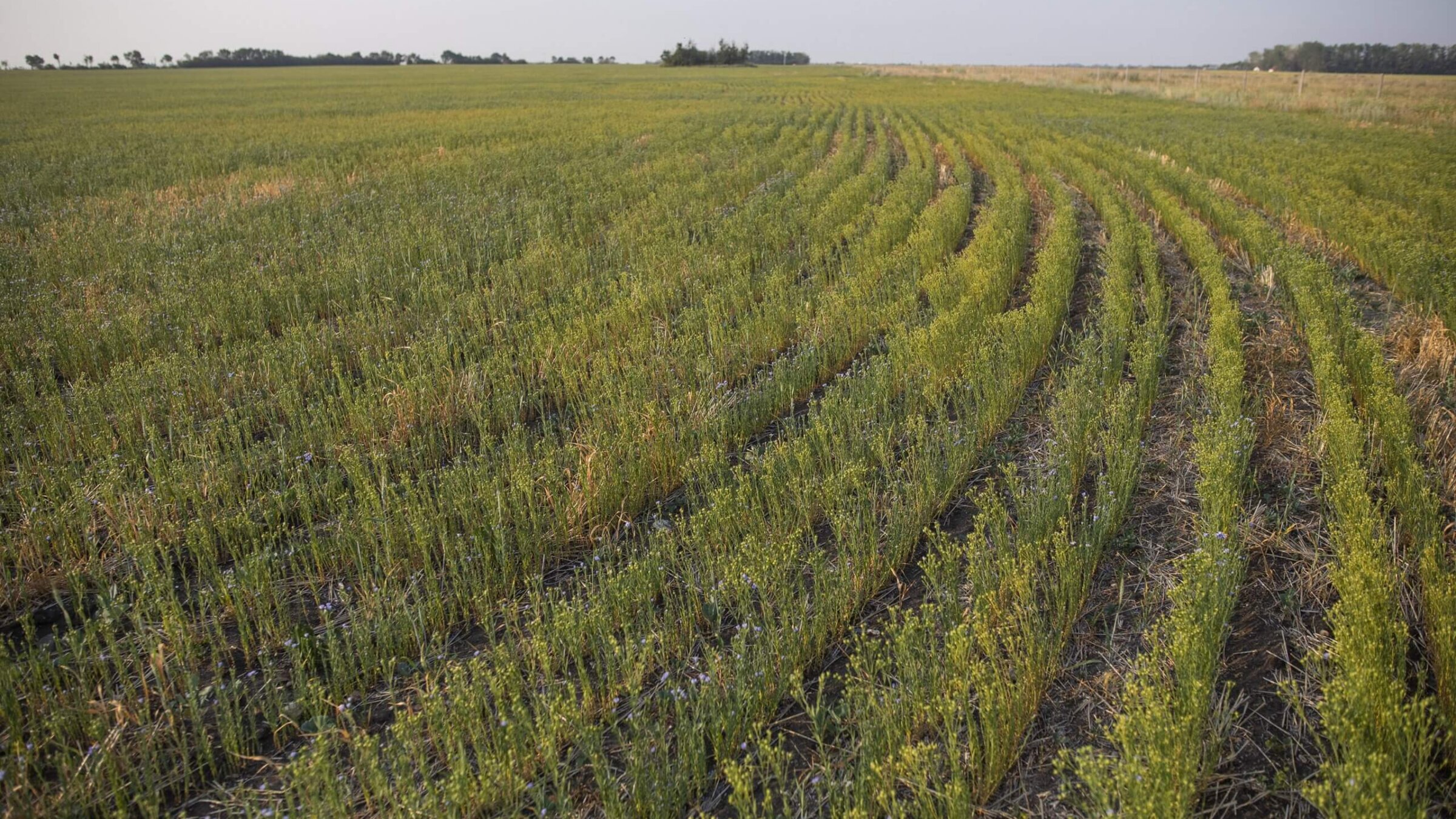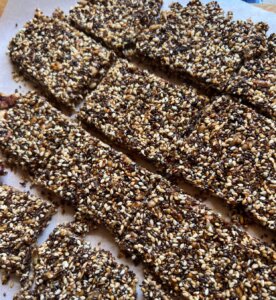The many reasons you should be eating more flax

A flax crop on a grain farm near Osler, Saskatchewan, Canada, in July 2021. Photo by Kayle Neis/Bloomberg via Getty Images
Wildflowers, herb flowers, and fruit blossoms are blooming throughout Los Angeles this time of year, but to me the most distinct of them all is a potent, beautiful blue flower, Linum perenne, or perennial flax.
Rabbis have a lot to say about flax. The plant makes many strange and intriguing appearances in the Torah and Mishnah. There are all kinds of prohibitions and conditions around planting and using flax.
Consider this idea from the Mishnah: “One who receives a field from another to cultivate for a few years, i.e., fewer than seven, may not plant flax in it, as flax greatly weakens the soil.”
This is curious for two reasons: Flax doesn’t require ideal growing conditions, is quite easy to establish, not water-intense or invasive, and doesn’t require intense nitrogen-fixing after it has been harvested. And: Where did we source linen from if it was not permissible to plant the flax seed?
Flaxseed, or linseed (Linum usitatissimum L.), is derived from the flax plant, a perennial in Southern California, though in other parts of the country it’s an annual.
Linseed has so many uses — tablecloths, wood varnish, oil painting canvas — and get this: there is one-quarter pound of linen in each pound of dollar bills. Flax is one of the most utilitarian and waste-free plants.
Did you know that linen is derived from the same kind of flax fibers our ancestors used to light the Shabbat candles? Flax plant fiber is spun and woven into a high-quality, sustainably-produced, affordable fabric, and when not dyed, it makes for fully biodegradable organic clothing, panties, bedding, and bandages, which is also antibacterial.
What’s more, flax is both food and medicine for the body and for the planet: It helps lower cholesterol and it keeps the digestive tract moving along. Flax and its oil are both rich in alpha-linolenic acid (ALA), an omega-3 fatty acid that may be helpful in combating heart disease, inflammatory bowel disease, arthritis, menopause, and other health issues.
Not only that, studies show that flax is high in magnesium, and recognized for alleviating the frequency and intensity of hot flashes for people experiencing menopause (what I call “meant-to-pause”).
Back to the rabbis: While most of us know about keeping kosher by separating milk and meat, there is also a prohibition on mixing wool (an animal product) with linen (flax: a plant by-product). One theory is that because the ancient Egyptians used linen to mummify bodies and used flax fiber as currency, the rabbis had a fraught relationship with flax.
According to Mishah, flax was good for wicks as it doesn’t smoke or stink. But the ancient rabbis argued about its uses. To some, flax is the holiest source to light candles with on Shabbat, to others, it is forbidden and the actual cause of impurity. In any case, in 2019, a rare linen wick, traced back to Byzantine times, was unearthed in Shivta in Israel’s Negev. But archaeologists know that flax wasn’t grown in the Negev. So it seems that flax, which divided the rabbis, helped bridge the peoples of the ancient Middle East.
For most of us, the easiest and best use of flax is to get more fiber into our diets. Harvest the seeds, and for easier digestion, pound with mortar and pestle and store in a mason jar or airtight container. Grinding the flaxseeds in a coffee grinder, or buying ground flaxseed meal, makes it easier to uptake the nutrients. Substitute ground flaxseed for regular flour, or just add 1-2 tablespoons each day to your favorite foods. Or try my favorite flax remedy: savory seed crackers.

Get the recipe for these flaxseed crackers here.

I hope you appreciated this article. Before you go, I’d like to ask you to please support the Forward’s award-winning journalism this Passover.
In this age of misinformation, our work is needed like never before. We report on the news that matters most to American Jews, driven by truth, not ideology.
At a time when newsrooms are closing or cutting back, the Forward has removed its paywall. That means for the first time in our 126-year history, Forward journalism is free to everyone, everywhere. With an ongoing war, rising antisemitism, and a flood of disinformation that may affect the upcoming election, we believe that free and open access to Jewish journalism is imperative.
Readers like you make it all possible. Right now, we’re in the middle of our Passover Pledge Drive and we still need 300 people to step up and make a gift to sustain our trustworthy, independent journalism.
Make a gift of any size and become a Forward member today. You’ll support our mission to tell the American Jewish story fully and fairly.
— Rachel Fishman Feddersen, Publisher and CEO
Join our mission to tell the Jewish story fully and fairly.
Only 300 more gifts needed by April 30

























